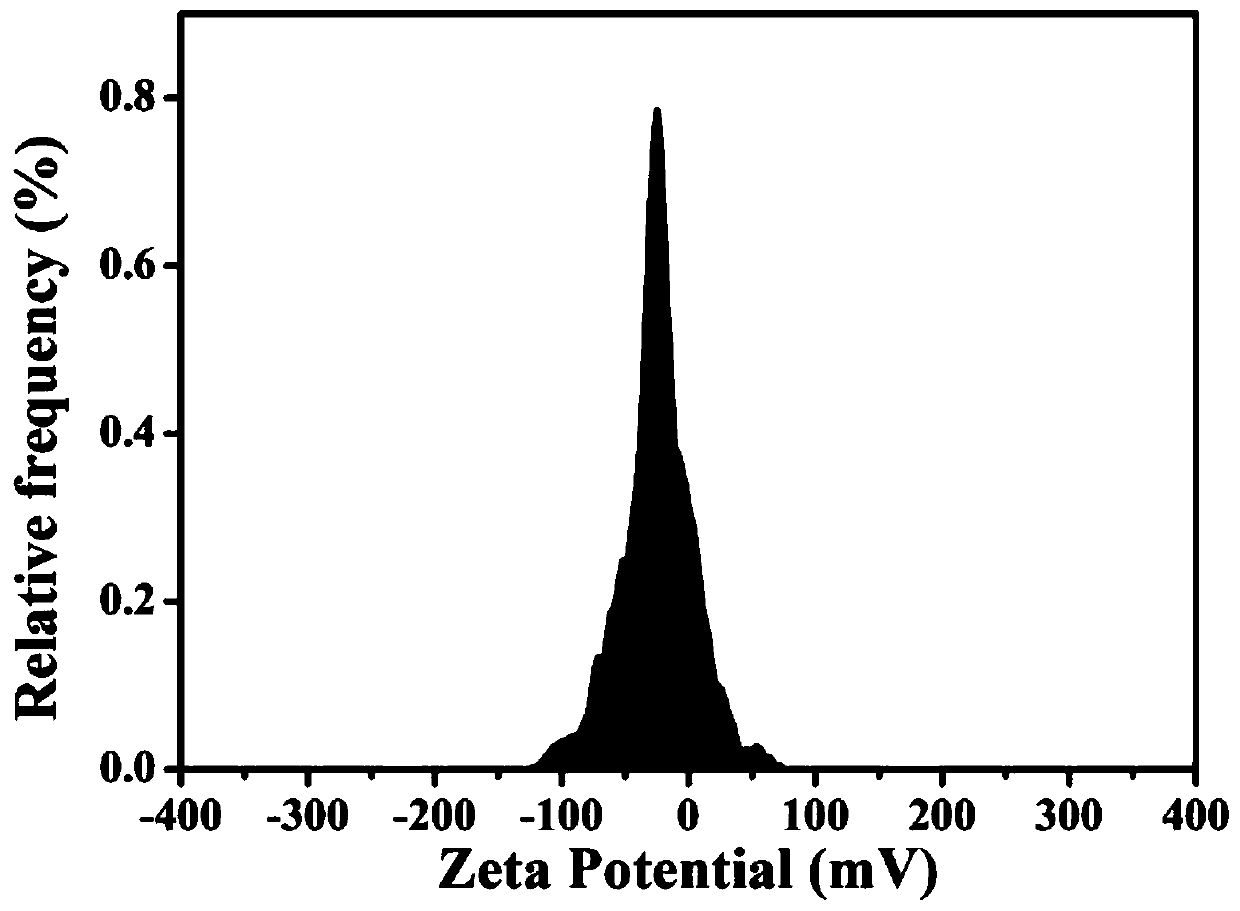Kit for detecting trypsin and inhibitor thereof based on platinum nanoclusters
A detection kit, trypsin technology, applied in the field of nano biosensing, can solve the problems of time-consuming, complex modification steps, etc., and achieve the effects of high sensitivity, good stability and high detection specificity
- Summary
- Abstract
- Description
- Claims
- Application Information
AI Technical Summary
Problems solved by technology
Method used
Image
Examples
Embodiment 1
[0035] Add 1ml of 16 mmol / L chloroplatinic acid solution and 1 mL of 40 mmol / L sodium citrate into 38ml of ultrapure water, stir and mix at room temperature for two minutes, then add 200 μl of 50 mmol / L sodium borohydride dropwise Used to reduce chloroplatinic acid; the mixture was stirred continuously at room temperature for 1 hour, and after the reaction, the solution was put into an ultrafiltration tube with a molecular weight cut-off of 3k, centrifuged and ultrafiltered at 6000 r / min for 24 hours, and washed 3 times with water to obtain a stable citric acid- Platinum nanocluster aqueous solution, all glassware used in the preparation process were soaked in aqua regia, washed thoroughly with double distilled water and dried. The Zeta potential of the as-prepared platinum nanocluster material is -26.7±1.9 mV (see figure 1 ); using X-ray photoelectron spectroscopy to carry out elemental analysis on citric acid stabilized-platinum nanocluster materials, it can be seen from the...
Embodiment 2
[0037] The platinum nanocluster material obtained in Example 1 was characterized by a transmission electron microscope, and it was found that the platinum nanoclusters were regularly and uniformly dispersed, with a size of 2.95 ± 0.53 nm (see image 3 ); protamine is added to the prepared platinum nanocluster material, because protamine is rich in arginine and has a strong positive charge, it can electrostatically interact with negatively charged platinum nanoclusters to make platinum nanoclusters The surface state of the material changes and then destroys the stability of platinum nanoclusters, resulting in the aggregation of platinum nanoclusters. The surface state of platinum nanoclusters is characterized by transmission electron microscopy, and the results are as follows Figure 4 As shown, protamine causes the change of the surface state of platinum nanoclusters to cause aggregation, which leads to the reduction of its catalytic activity.
Embodiment 3
[0039] Add 10 µL of 0.2 mg / mL protamine to 10 µL of 10 ng / mL trypsin and 30 ng / mL trypsin solution, respectively, add 480 µL of Tris-HCl buffer solution with a concentration of 10 mmol / L and pH 8, in Incubate at 37°C for 2 hours; after that, add 50 μL of platinum nanoclusters, N-ethyl-N-(2-hydroxy-3-sulfopropyl)-3- Methylaniline sodium salt and 3-methyl-2-benzothiazolinone hydrazone hydrochloride, after incubating at 40°C for 25 minutes to obtain color-developed products, visually observe the color change or measure the UV-visible absorption at 590nm degree, the result is as Figure 5 Shown: curve (a) blank, (b) 10ng / mL trypsin, (c) 30ng / mL trypsin. When 20ng / mL inhibitor was added, the absorbance decreased (see Figure 5 Curve d), indicating that the inhibitor acts to inhibit the hydrolysis of protamine by trypsin.
PUM
 Login to View More
Login to View More Abstract
Description
Claims
Application Information
 Login to View More
Login to View More - R&D
- Intellectual Property
- Life Sciences
- Materials
- Tech Scout
- Unparalleled Data Quality
- Higher Quality Content
- 60% Fewer Hallucinations
Browse by: Latest US Patents, China's latest patents, Technical Efficacy Thesaurus, Application Domain, Technology Topic, Popular Technical Reports.
© 2025 PatSnap. All rights reserved.Legal|Privacy policy|Modern Slavery Act Transparency Statement|Sitemap|About US| Contact US: help@patsnap.com



